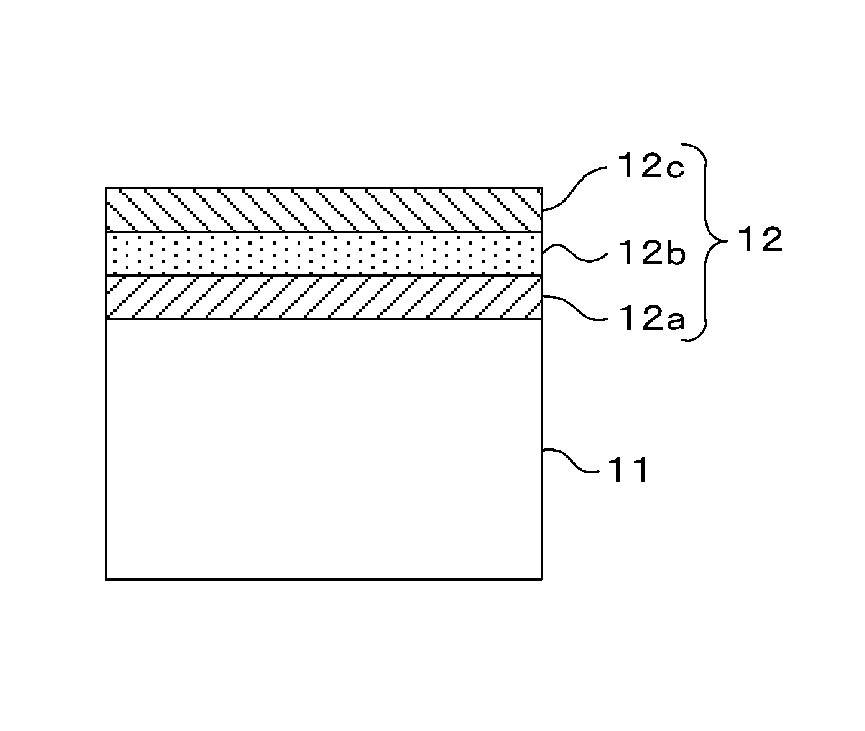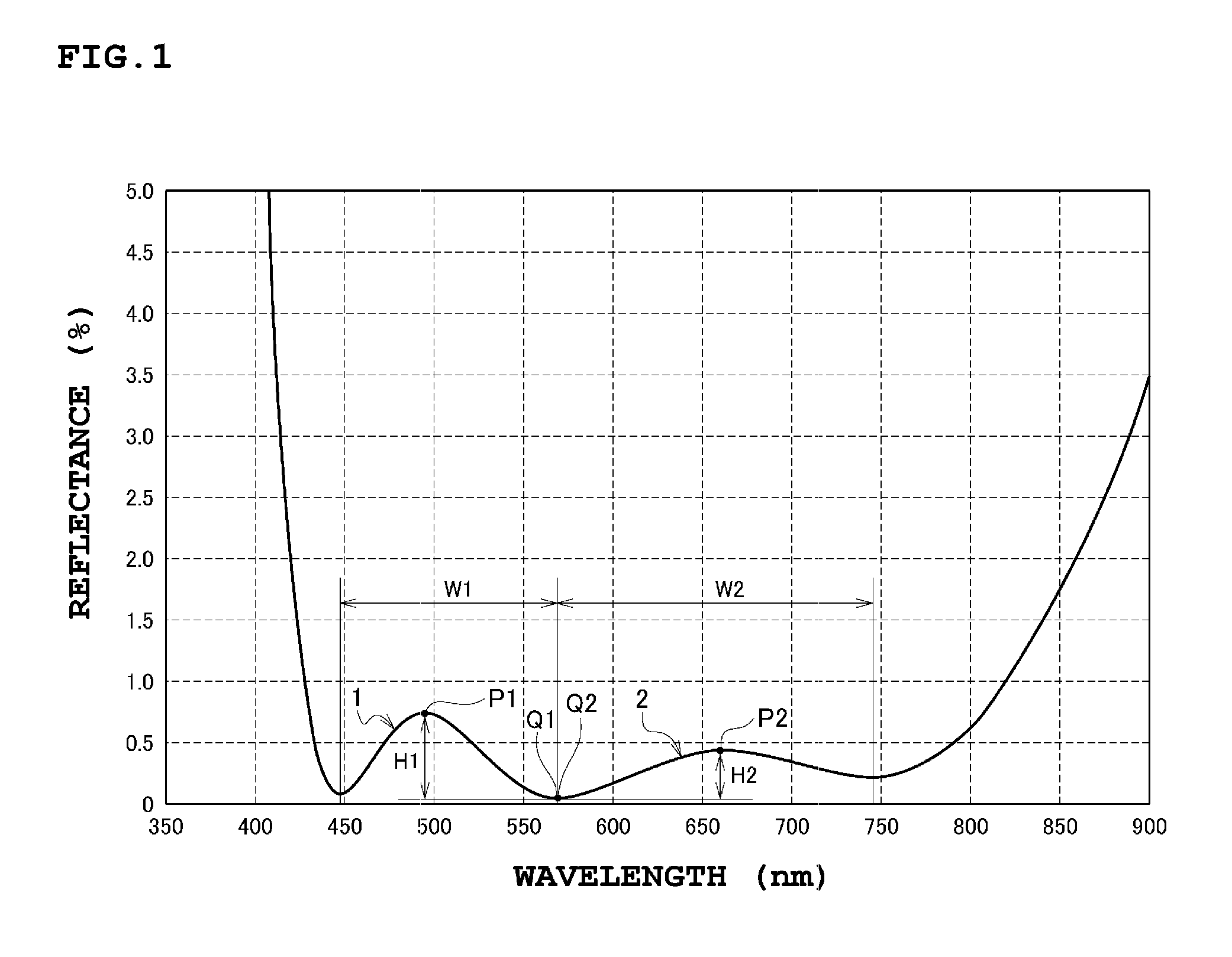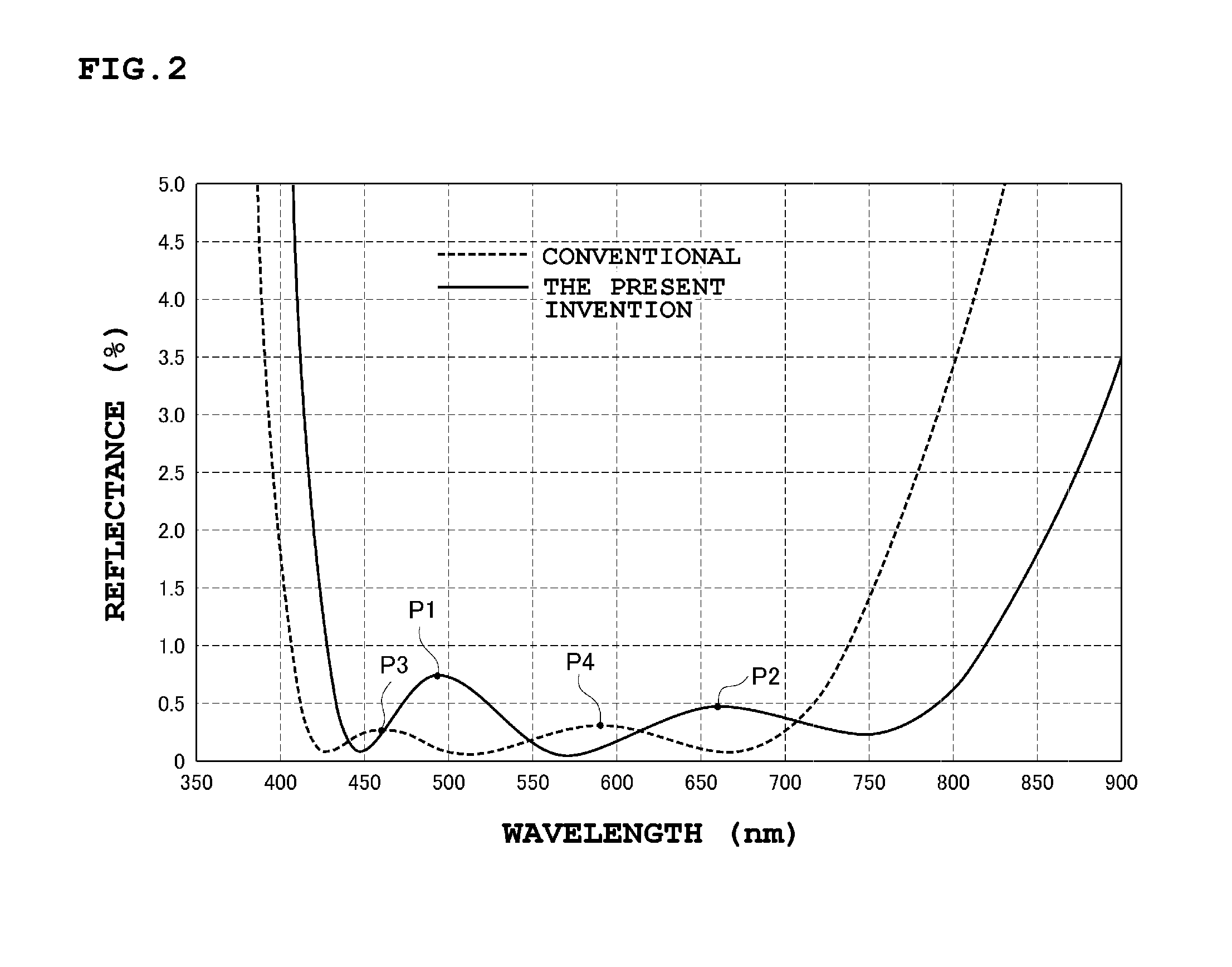Antireflective film and optical element
an anti-reflection film and optical element technology, applied in the field of anti-reflection films and optical elements, can solve the problems of difficult in some cases to sufficiently satisfy optical performance, uneven variation rate of surface angle or curvature of optical surfaces, etc., and achieve the effect of reducing ghost effect and small variation in optical properties
- Summary
- Abstract
- Description
- Claims
- Application Information
AI Technical Summary
Benefits of technology
Problems solved by technology
Method used
Image
Examples
modified example 1
of the First Example
[0109]As a modified example 1 of the above-mentioned example, FIG. 6 shows a film structure of the three-layer antireflection film formed by performing film formation of the first layer and the second layer twice, and the method of forming this antireflection film will be described hereafter. By forming a relatively thick film by performing film formation twice, uniformity of a film quality (such as refractive index and film density, etc.) in a film thickness direction can be improved, and controllability of the film thickness during deposition can be improved. Therefore, a film having a desired film design value (optical film thickness) can be stably formed.
The first layer: forming condition of the Al2O3 film
The film formation of the first layer is performed twice, to thereby equalize the film structure.
(First Film Formation)
[0110]Substrate heating: about 260° C.[0111]Vacuum degree during film formation after introducing oxygen: 7.2×10−3 Pa[0112]Deposition rate:...
modified example 2
of the First Example
[0126]In addition, as a modified example 2 of the first example, FIG. 8 shows the film structure of the three-layer antireflection film formed by performing film formation of the first layer and the second layer of the first example twice, while providing a difference in the film structure between the first film formation and the second film formation, and performing a fine adjustment of the optical property. The method of forming this antireflection film is described hereafter. In the modified example 2, the film formation is performed by performing film formation of the first layer and the second layer twice, while providing a difference in the film structure between the first layer and the second layer. The difference is provided in the film structure because in the same constitutional material, when the film quality is varied in a film thickness direction, such a variation in the film quality in the film thickness direction can be canceled by providing the di...
second example
[0144]FIG. 10 shows a specific second example of the antireflection film (four-layer film structure: Sub / x1L / x2M / yH / zL / Air). First, the constitutional material is as follows: the optical glass by HOYA Corporation (glass type: M-BACD12) is used for the base material of the concave meniscus lens 11. Further, In each layer constituting the antireflection film, the first layer 12a is made of aluminum oxide (Al2O3), and the second layer 12b is made of aluminum oxide (Al2O3), and the third layer 12c is made of an optical film material by Canon optron Inc., (product name: OH-5 (a mixed film of zirconium and titanium oxide (ZrO2+TiO2)), and a fourth layer 12d is made of magnesium fluoride (MgF2). Further, the ratio of a mixed material constituting the third layer is ZrO2:TiO2=9:1. The following numerical range can be applied to the numerical values of x, y, z.
x1=0.01 to 0.50
x2=1.00 to 1.60
y=0.70 to 2.30
z=0.70 to 1.30
[0145]The film structure of each layer is shown in FIG. 10.
(The Method of M...
PUM
| Property | Measurement | Unit |
|---|---|---|
| incident angle | aaaaa | aaaaa |
| refractive index | aaaaa | aaaaa |
| refractive index | aaaaa | aaaaa |
Abstract
Description
Claims
Application Information
 Login to View More
Login to View More - R&D
- Intellectual Property
- Life Sciences
- Materials
- Tech Scout
- Unparalleled Data Quality
- Higher Quality Content
- 60% Fewer Hallucinations
Browse by: Latest US Patents, China's latest patents, Technical Efficacy Thesaurus, Application Domain, Technology Topic, Popular Technical Reports.
© 2025 PatSnap. All rights reserved.Legal|Privacy policy|Modern Slavery Act Transparency Statement|Sitemap|About US| Contact US: help@patsnap.com



